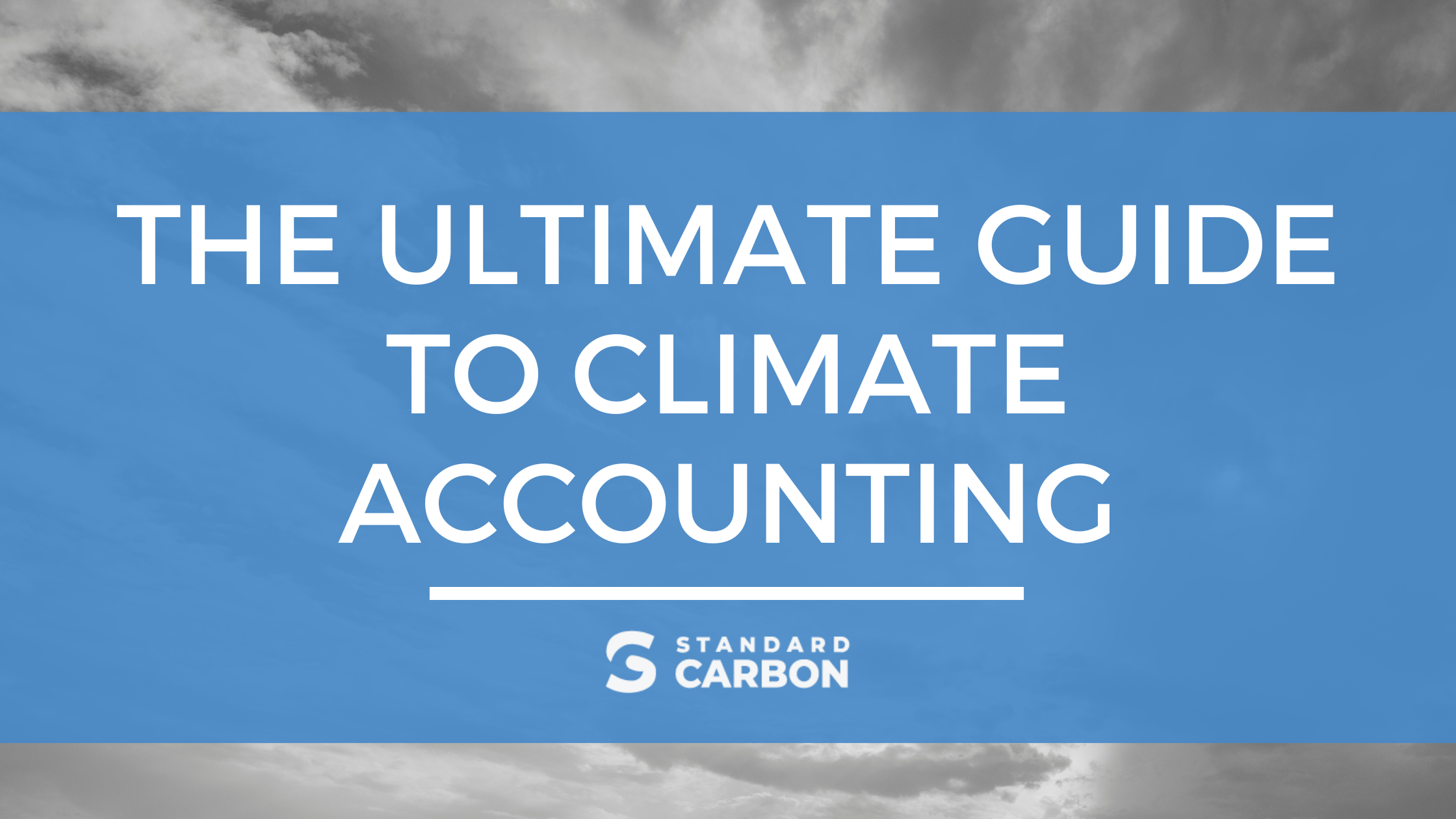While finding new innovations to speed up our chances of surviving the climate crisis is great. It can be overwhelming for many businesses who would like to, or must, implement carbon reduction practices.
Standard Carbon created climate accounting software to help businesses of all sizes manage every aspect of their environmental impact. So, we thought it’s best to break down some of the most common terms to educate those who want to learn, get involved, and heal the climate.
Please enjoy the ultimate guide to climate accounting.
The Guide
Climate Accounting: The proactive action of managing a company’s relationship to its supply chain and exposing risks to the rising price of carbon. Get a more detailed breakdown here.
Supply chain: A collection of processes that help create, distribute, and sell a product. Starting with the supplier that provides the necessary materials to manufacture and then sell the product. The responsibilities of a supply chain are to monitor this entire process by organizing and sourcing these raw materials, manufacturing the product, selling and delivering them to customers, plus handling potential returns.
Climate disclosures: A document that discloses the actual and potential impact of climate related risks, impacts and opportunities, on the company’s strategy and financial planning. It’s a form of risk management that discloses how an organization identifies, assesses, and manages climate-related risks. Mandatory by many governing bodies around the world. Learn more: https://www.fsb-tcfd.org/
Scope emissions: Ways of labeling the source of each carbon emissions produced by a company. Scope one emissions include direct company emissions, like heating the company building or putting fuel in a delivery truck. Scope two emissions are generated from the electricity that a company uses.
Scope three: Counts for the emissions across the company’s supply chain. These emissions are not under the company’s direct control. Making them very important to count since they are affected by choices the company makes. Decisions about where to source raw material, or decisions to subsidize employee’s use of public transportation, all play a role in scope three emissions. Scope three emissions make up a large portion of a company’s carbon footprint, for example Kraft saw 90% of their overall greenhouse gas emissions come from scope three.
The Carbon Terms
Carbon Ledger: Just like in accounting where the general ledger is the main accounting record for a company. A carbon ledger is a record of all carbon emissions for a company, including carbon debit, and credits.
Carbon Debit: This is information recorded on the carbon ledger when you purchase an offset or implement a carbon reduction practice with in the company.
Carbon Credit: Represents the amount of carbon emissions put into the atmosphere by company activities. Such as carbon expelled during production or business travel.
Carbon Offset: The counterbalance of Carbon emissions by reducing or eliminating them in externally in other location. For example, if a factory in Nepal pumps 5000 Tonnes of CO2 into the atmosphere, they can pay for a wind farm in Europe to offset those emissions. Saving the same amount of C02 from entering the atmosphere.
Carbon Inset: Carbon emissions that are reduced or avoided with in the upstream or downstream of a company’s supply chain through a carbon offset project. Unlike offsets, which are reduced externally they are reduced internally within the value chain.
Carbon debt: The imbalance between the carbon footprint and any carbon offsetting that has been agreed or undertaken to counteract this.
Carbon Footprint: The amount of carbon emitted from a company. Usually this information is gathered to to create a carbon footprint report.
Did we miss some?
Feel free to reference this guide whenever needed. If you think we are missing a term, please contact us info@standardcarbon.ai




